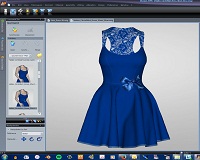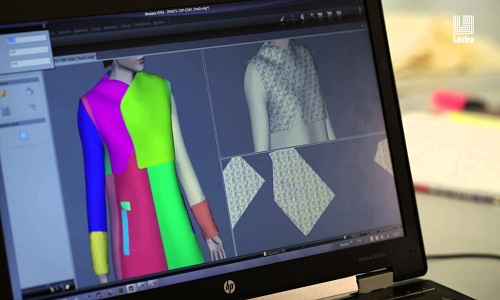"Lectra’s latest white paper ‘Integrate to Collaborate’ emphasizes multinational supply chains and omni-channel retail distribution networks are standard and seasonal, geographic and size variability generate both huge numbers of SKUs (stock keeping units) and incredibly complicated product development and distribution processes. The paper says, without integration, this complexity creates more blind spots when it comes to transparency, visibility, and the ability to respond to change, than it does in perhaps any other industry."

Lectra’s latest white paper ‘Integrate to Collaborate’ emphasizes multinational supply chains and omni-channel retail distribution networks are standard and seasonal, geographic and size variability generate both huge numbers of SKUs (stock keeping units) and incredibly complicated product development and distribution processes. The paper says, without integration, this complexity creates more blind spots when it comes to transparency, visibility, and the ability to respond to change, than it does in perhaps any other industry. But as a result, the fragmented nature of the fashion industry means that it stands to benefit more than other industries from establishing a consistent, contemporaneous thread of data that links essential processes and carries through every iteration and variation from design to delivery.

This does not mean, however, that every conceivable data point should be integrated with a common backbone, and while an IT professional may be better equipped to visualise where data sets are separated, executives have a unique vantage point when it comes to charting the opportunities for linking different cultures, and bridging the right divides to enable better-informed decision-making. Beyond design tools, further common points of integration that can deliver whole-business benefits include: manufacturing hardware (cutters, spreaders, and plotters) with native file support shared with CAD and PLM; merchandise planning solutions that draw business intelligence from previous years’ sales performance; supplier management ranking tables that can be directly linked to sustainability indexes and auditing tools; and collection management and marketing modules that leverage metadata created during the earliest stages of inspiration.
Benefits of integration
Many of these points of integration have already delivered value for brands and retailers: between patternmaking solutions and PLM have delivered greater accuracy in bills of materials; detailed material characteristics made available beyond the point of creative design have improved communication with mills, manufacturers, and trim and packaging suppliers, allowing sourcing managers to negotiate better pricing based on sound business intelligence; three-dimensional prototypes and virtual samples, created with 3D CAD tools and made available to view within PLM, have dramatically decreased the cost of sample creation and logistics; successful integrations of design and development solutions with sourcing and supplier management systems have given rise to a ‘design-to-cost’ approach, where creative teams are able to visualise the bill-of-material and bill-of-labour impact of their decisions.
This allows for more accurate pricing, reduced lead times, more effective production, and better positioning across international markets; CAD to PLM integration, with in-application access to components, materials, and other libraries stored within PLM, has afforded designers more time to experiment, and resulted in greater style variety within collections, as well as helping them to reach markets more quickly; integrating PLM with ERP – the two pillars of most information environments – can provide a more holistic view of products and collections, with retail performance reports informing the styles, colours, fits and prices of future collections. Keeping data consistent from the inspiration stage to the final production stages allows marketing and retail teams to better tailor collections to their target audiences.
Aligning business goals
These levels of integration, however, can be difficult or expensive to achieve when working across different ecosystems, where data formats, inputs, outputs, and interfaces vary widely. Many brands and retailers find considerable value in working with a vendor who offers standardised data interchange between their own design tools, patternmaking products, and PLM, avoiding the need to develop potentially costly, bespoke integrations between different families of solutions. Whoever modern brands and retailers choose to obtain their software from, integration should not be considered just a matter of linking one technology to another, but rather an opportunity to create an information environment that aligns with whole-business goals whilst simultaneously improving the user experience, collaboration, and other important metrics at the individual process level.












